“Why do those American doctors only want to know about what the Khmer Rouge did to us? Why don’t they ask about what the U.S. government did to srok Khmer [Cambodia]?” —Khmer Rouge Survivor
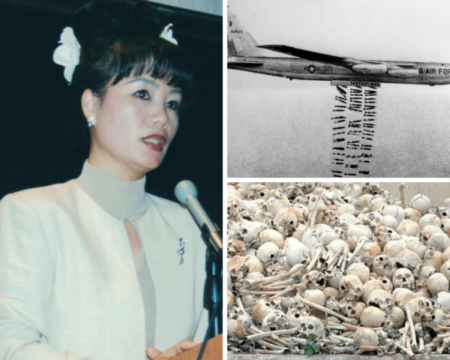
Ohio University - April 2003. I speak about the defining moments of Cambodia’s fall, some of which I witnessed personally: the B-52 bombing of Cambodia and the flight of its residents; the Khmer Rouge’s genocide of 1/3 of Cambodia’s population, the almost complete extermination of its educated class.
January 7, 2018 marks the 39th anniversary of a day when “broken glass” sank.
In the summer of 1976, at age 11, the Khmer Rouge forced me to witness the public execution of a man and a pregnant woman. These two people, the Khmer Rouge said, loved each other without their sanction; therefore, they had to be eradicated. Traumatized by this act of cruelty, I asked my oldest sister, Chea, a question in the hope of understanding our pain and the loss of those we loved. Her answer became the seed of my survival, planted by a sister whom I idolized.
“Chea, how come good doesn’t win over evil? Why did the Khmer Rouge win if they are bad people?”
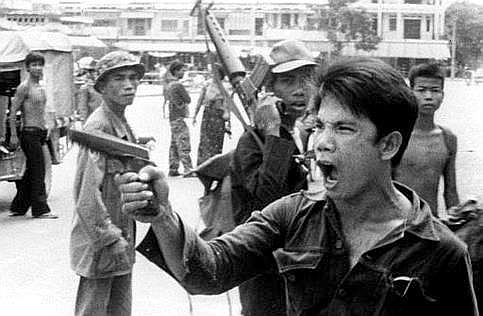
A Khmer Rouge soldier waves his pistol and orders store owners to abandon their shops in Phnom Penh, Cambodia on April 17, 1975 as the capital falls to communist forces. The city’s population of 2 million was forced to evacuate.
Chea answered: “jchan baan chea preah chnae baan chea mea,” which means “Loss will be God’s, victory will be the devil’s.” When good appears to lose, it is an opportunity for one to be patient, and become like God. “But not very long, p’oon srey [young sister],” she explained, and referred to a Cambodian proverb about what happens when good and evil are thrown together into the river of life. Good is symbolized by klok, a type of squash, and evil by armbaeg, shards of broken glass. “The good will win over the evil. Now, klok sinks, and broken glass floats. But armbaeg will not float long. Soon klok will float instead, and then the good will prevail.” Chea’s piercing eyes reinforced her words. “P’yoon, wait and see. It will happen.”
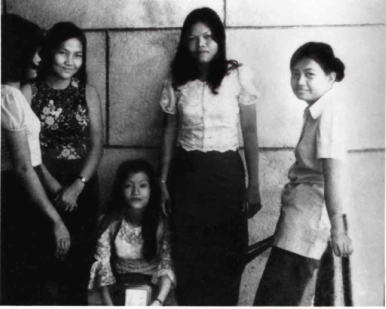
My lost sister Chea, seated with her college friends, before the Khmer Rouge takeover.
In the fall of 1978, Chea died at the tender age of 22 of a prolonged fever and deprivation. On December 25, 1978, Vietnam invaded Cambodia and drove the Khmer Rouge into the remote border areas near Thailand. On January 7, 1979, Phnom Penh, the Cambodian capital, was liberated.
During their reign of terror from April 17, 1975 to January 7, 1979, the Khmer Rouge were responsible for the deaths of an estimated 2 million Cambodians. Despite losing my parents and several siblings, witnessing unspeakable acts of cruelty, and enduring torture and work camps, my spirit remained unbroken. One of the things that kept that spirit alive was my dream of a new life in America, a country where my father, Pa, promised there was freedom.
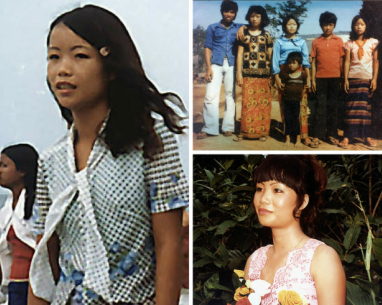
Left: Me, age 15, at the beach in Mairut, Thailand. This was the first time refugees were allowed out of camp. Top: Me, age 14, and my surviving siblings and brother in-law, in Khao I Dang refugee camp, Thailand, 1979. Bottom: Dressed traditionally, I represent Cambodia in welcoming tourists from 20 countries at the Philippine Refugee Processing Center in 1981.
I persevered, against incredible odds, and did ultimately make it to America in 1981. But there I learned that the country in which my father so fervently believed had actually inflicted many of the horrors that my people and I had endured.
US Crimes Against Its Own People
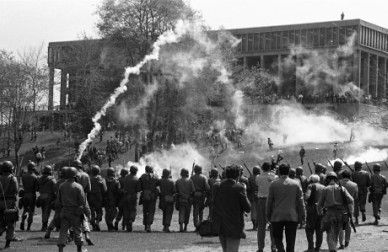
The Ohio National Guard fires tear gas to disperse students gathered on the Commons on May 4, 1970.
In 1987, during an American government class at the University of Oregon, pictures of leaders’ crimes right within America jogged a real-life nightmare from my childhood. In a textbook, I saw 14-year-old Mary Ann Vecchio screaming and kneeling over the body of 20-year-old Jeffrey Miller, shot dead by the Ohio National Guard on May 4, 1970. At Kent State University, a student protest against the U.S. bombing of Cambodia had turned deadly. Students William Schraeder, Allison Krause and Sandra Lee Scheuer were also tragically killed that day.
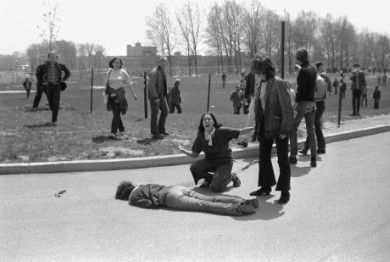
14-year-old Mary Ann Vecchio kneels, screaming over 20-year-old Jeffrey Miller, shot dead by the Ohio National Guard on May 4, 1970.

Wounded Kent State student John Cleary grimaces as ill-equipped students fight to save his life, May 4, 1970.
As my heart quickened, I pushed the book away. In seconds, I was transported to Takeo Province in 1969, when I was only four years old. It was happening all over again.
Standing at the window overlooking the Bassac River, my family and I stare in horror as gigantic tongues of fire and smoke lick the black sky, lighting up the landscape in the distance, somewhere on other side of the river. Silhouettes of planes loop in the darkness with sequins of light pouring from them. The sequins dissipate into the brushy shadow of distant trees, then erupt in enormous explosions, bright fire upon the earth. We see them before we hear them, the explosions arriving as delayed echos. Each burst concludes with a massive, engulfing mushroom of smoke.
Memory speaks until it hurts. Pa’s words “B-cinquante-deux” are suddenly vivid. He said that B-cinquante-deux was bombing Cambodia. I later learned that villagers who hid in their bunkers escaped the direct hit, but not the intense heat (5,260 F) created by the bombs. They were incinerated in their bunkers.
Sitting in that class 18 years later, my mind, for the first time, translated B-cinquante-deux. It was French for B-52s. Suddenly, horror rolled over me, as I realized what really had been happening when I was four years old. Visceral emotions tore through me like a hurricane. I was jolted to the core. I bolted out of class, oblivious to my surroundings, running for the shelter of my home.
Emotional Turmoil
At the bus stops, I could feel people’s stares as tears rolled down my cheeks. When I got home, I flung the door open, and threw my textbooks, my backpack and myself onto the carpet in the living room.
Alone, I wailed and pounded on the floor. The four-year-old in me called out to my father, “Pa, it was the American government who bombed us! I’m so sorry they hurt you, hurt us . . . You said they were good leaders, but they are NOT!….”
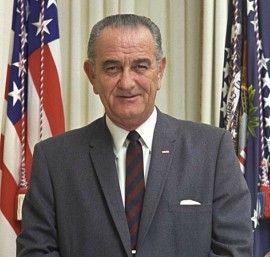
President Lyndon B. Johnson
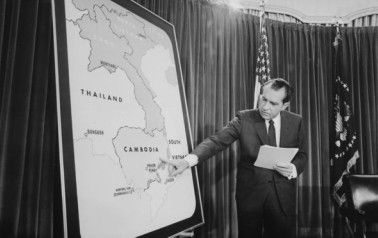
President Richard Nixon points to Cambodia during a Vietnam War Press Conference on April 30, 1970.
Under Presidents Lyndon Johnson and Richard Nixon, the United States dropped over 5.5 billion pounds of bombs on Cambodia, a neutral country. That is more explosive power than ALL of the bombs dropped by the Allies during WWII (including Hiroshima and Nagasaki). Cambodia was the most heavily bombed country in history (ref. “Bombs Over Cambodia” by Taylor Owen and Ben Kiernan).
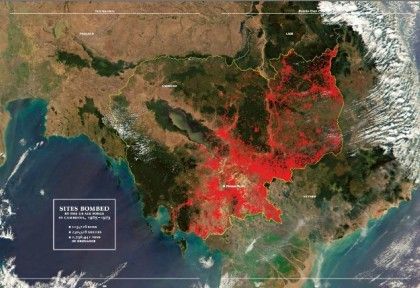
Sites bombed by the US in Cambodia from 1965-1973: 113, 716 sites; 230,716 sorties; 2,756,941 tons (5.5 billion pounds) of ordinance.
It was this bombing that destabilized Cambodia. It created the government vacuum that allowed the Khmer Rouge come to power. The discovery of what my dream country had done to my family and my people has hung over me like a dark cloud ever since, leaving me traumatized and searching for meaning as a child survivor living in America. It shaped me as a U.S. citizen and changed the direction of my endeavors in college. I left behind my dreams of medical school, and threw heart, body, and soul into writing a memoir of my life in Cambodia and refugee camps. I felt a deep social responsibility to show America and the world what I had seen; to reveal how human and fallible our leaders really are, and what damage they can cause if they are followed blindly.
A Sense of Personal Justice
I spent five painful years writing my memoir, When Broken Glass Floats: Growing Up Under the Khmer Rouge. At my request, my publisher W. W. Norton released it internationally on April 17, 2000, to coincide with the 25th anniversary of the Khmer Rouge takeover. It has received a prestigious book award, been translated into six different languages, been adopted as required class reading internationally, and been praised in such notable media as the New York Times, (London) Sunday Times and the Boston Globe. It has carried me around America and the world, as a social activist and international speaker, delivering my message of tragedy and caution at lecture halls and universities.
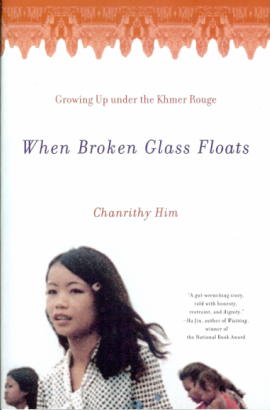
At a 2003 international conference where I spoke, a filmmaker said to me, “Your story reminds me of The Pianist, but from a point of view of a girl….” His compliment and others’ rekindled my long-held dream of adapting my memoir into a feature-length screenplay, in the hope of reaching an even wider audience. I finished that screenplay in 2004, but still something was missing.
The missing piece later came to me when I remembered a fellow Cambodian survivor’s anger, vented to me over the phone. In 1989, I had called him to ask if we could interview his daughter as a subject for a major post-traumatic stress disorder (PTSD) study. At Oregon Health Sciences University, Dr. William H. Sack had received a grant for over $1 million from the National Institute of Mental Health to conduct this study, and had employed me to play a pivotal role as his research associate.
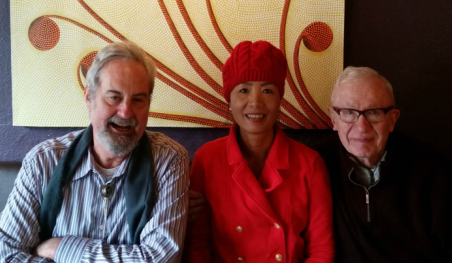
From left to right: Dan Dickason, Chanrithy Him, Dr. William H. Sack meet on December 21, 2017 for lunch to reminisce. In 1983, thirty four years ago, Dan made a phone call to the Oregon Health Sciences University School of Medicine, seeking psychiatric help for many of his Cambodian students, who kept reporting “fantasy” stories of horror. That call sparked the birth of The Khmer Adolescent Project, a pioneering PTSD study led by Dr. Sack and assisted by Chanrithy Him, of Cambodian youths surviving the Khmer Rouge genocide.
I informed the father that medical doctors and I were interested in interviewing young Cambodians and their parents about their lives under the Khmer Rouge. His voice became hard and accusing.
“Why do those American doctors only want to know about what the Khmer Rouge did to us? Why don’t they ask about what the U.S. government did to srok Khmer [Cambodia]?”
Keeping my composure, I explained to him that our sole purpose was to better understand what we survivors had endured, so that the medical community could better help us and those who have suffered a similar fate. My explanation calmed him down and he graciously allowed me to talk to his daughter. But his words and his anger haunted me.
US Leaders’ Sins and Abuse of Power
Not until twenty three years after his bombastic blast did I truly understand his anger. In 2012, as an author and international speaker, I decided to let his voice speak. I would include the unfathomable news that the US and UN had supported the Khmer Rouge, whispers of which I had been hearing since high school. As I researched the facts on the Internet, I was horrified to learn the details in Elizabeth Becker’s book, When the War Was Over: The Voices of Cambodia’s Revolution and Its People (Simon & Schuster), Jack Colhoun’s 1990 article (“On the Side of Pol Pot: U.S. Supports Khmer Rouge”), Australian journalist John Pilger’s (“The Long Secret Alliance: Uncle Sam and Pol Pot”), and his film, Cambodia: The Betrayal.
The articles and film highlighted the secret, ego-serving roles played by evil and sinful leaders in America, China, West Germany, Singapore, Britain, Thailand, UN and Malaysia. Spanning the U.S. administrations of Carter, Reagan, and Bush, these leaders worked together secretly from 1979 to 1990, perpetrating inhumanities which they knew would never be accepted by their citizens.

Presidents Jimmy Carter, Ronald Reagan and George H.W. Bush
US National Security Adviser Zbigniew Brzezinski played an important role in determining America’s policy to support the Khmer Rouge [Pol Pot]. In Becker’s book, she reported that Brzezinski said: “I encouraged the Chinese to support Pol Pot. I encouraged the Thai to help the D.K. [Democratic Kampuchea]. The question was how to help the Cambodian people. Pol Pot was an abomination. We could never support him but China could.” Winked publicly, he added, as China sent arms to the Khmer Rouge through Thailand.
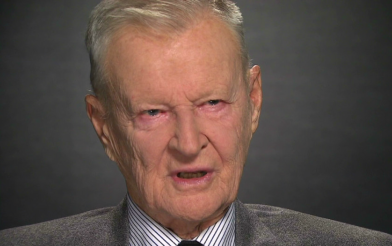
US National Security Adviser Zbigniew Brzezinski
In his article, Pilger wrote: "The US not only helped to create conditions that brought Cambodia's Khmer Rouge to power in 1975, but actively supported the genocidal force, politically and financially. By January 1980, the US was secretly funding Pol Pot's exiled forces on the Thai border. The extent of this support -- $85 million from 1980-86 -- was revealed 6 years later in correspondence between congressional lawyer Jonathan Winer, then counsel to Sen. John Kerry (D-MA) of the Senate Foreign Relations Committee and the Vietnam Veterans of America Foundation.”
In “On the Side of Pol Pot: U.S. Supports Khmer Rouge”, reported Colhoun, “When asked about U.S. policy in Cambodia during an April 26, 1990 ABC News special, Rep. Chester Atkins (Dem.-Mass.) characterized it as ‘a policy of hatred.’
“The U.S. is responsible for millions of deaths in Southeast Asia over the past 30 years. Now the U.S. government provides support to a movement condemned by the international community as genocidal. How long must this policy of hatred continue?”
Die, Don’t Live to Burden the Earth
American leaders couldn’t deal with the fact that the U.S. was defeated in the Vietnam War, so they used the Khmer Rouge and other Cambodian factions as their political pawns in a vain attempt to end the Vietnamese occupation in Cambodia.
After rewriting my screenplay for When Broken Glass Floats, I needed to vent to my older sister Ry, but I couldn’t do it. She, too, has been suffering from PTSD. Instead, I called my award-winning screenwriter friend Derek who had reviewed previous versions of the script. When he answered the phone, my voice collapsed. I was choked with emotions of indignation and betrayal.
“Sons of bitches—” I rested my face in my hand, as I sat in front of my computer.
“What’s wrong?” Derek asked.
I took a deep breath, then let it out. “Those sons of bitches . . . those damn bastards. Can you believe it? Our US leaders continued to support the devil Khmer Rouge, the ones who murdered my parents and brothers and sisters and 2,000,000 innocent Cambodians, for 11 years after they were ousted? They even got the UN, Britain, China, West Germany, Malaysia, Thailand, and Singapore to help them.”
“I’m not surprised….”
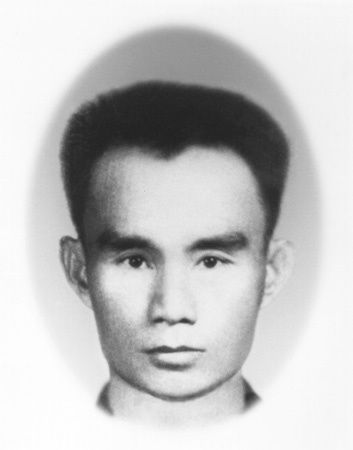
Chanrithy Him’s father, Pa, endures the most gruesome death. In May 1975, the Khmer Rouge make her father and other men dig their own mass grave. The instant Pa learns of his imminent death, Pa denounces the Khmer Rouge and calls them, “Traitors and liars....” Immediately, the Khmer Rouge kill Pa first, but slowly.
“I’m so angry, so hurt....” I covered my mouth, as if I was trying to hold back the hurtful feelings boiling over from my mind, body and soul.
“Hell awaits them,” Derek said decisively, and I felt a sense of relief that my American friend understood what I needed—Justice.
Justice for ALL war survivors down through history, justice for my parents, siblings, and the countless others who perished at the hands of power-hungry, unfeeling, egotistical leaders and maniacal governments.
In the U.S., many Americans have yet to learn about what their leaders did in their name, and the tax money they secretly wasted supporting such devils as the Khmer Rouge. During my visits to the Asia Society in Manhattan and to Georgetown University, audience members asked me, “How can we stop genocide?”
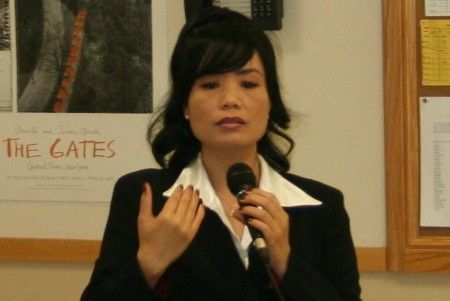
Chanrithy Him, choking up after a student asked “The Question”.
That question overwhelmed me with resentment and anger and emotions for which I had no name. All I could manage to say was: “You know, I’m going to sleep on that question.” I couldn’t answer, I didn’t have one.
Today I know what I want to say. I am ready to express those emotions. First, I want to speak to all the ego driven, self-serving bastards of the world : Your existence harms mankind. In the words of a Cambodian adage, “Slab, kom aoy rsa norm thngon phendei, which means, “Die, don’t live to burden the earth.”
And to those leaders in the US and worldwide who helped the Devil Khmer Rouge to power and secretly assisted it from 1979 to 1990 — reflect on the tragic events of 9/11, the Japanese massacre of Nanking, and Germany’s inhumanities in World War II. Now imagine if you discovered that the perpetrators of those crimes were secretly aided by your own leaders. Imagine how it would feel to lose what was taken away from us. Imagine the pain that we still feel today. Can you feel our suffering?
Are you even capable of feeling empathy or compassion?
Or are you a cowardly and heartless soul?
If you are, “Hell awaits you”. I believe God will not forgive you for what you’ve done unless you redeem yourself in your lifetime.
You better get to work.
Chanrithy Him is the author of the forthcoming novel, “Rise of the Golden Aura" and memoir, “Unbroken Spirit: A Cambodian Child Survivor’s Journey for Personal Justice,” the sequel to When Broken Glass Floats: Growing Up Under the Khmer Rogue (Norton).
